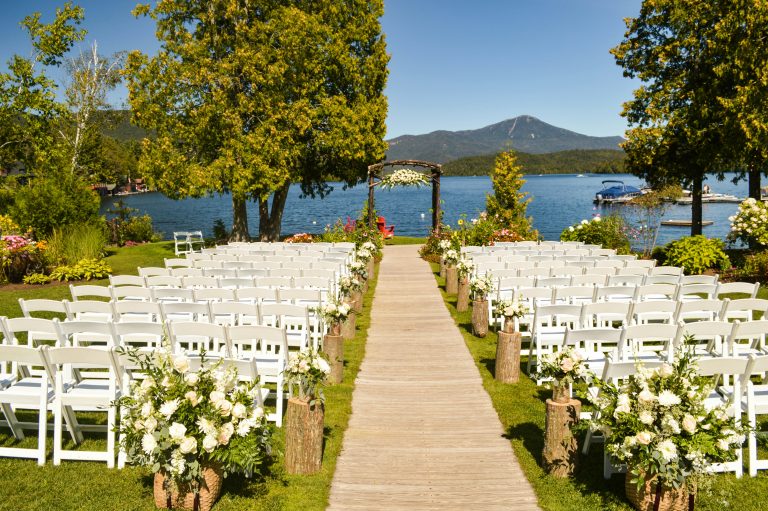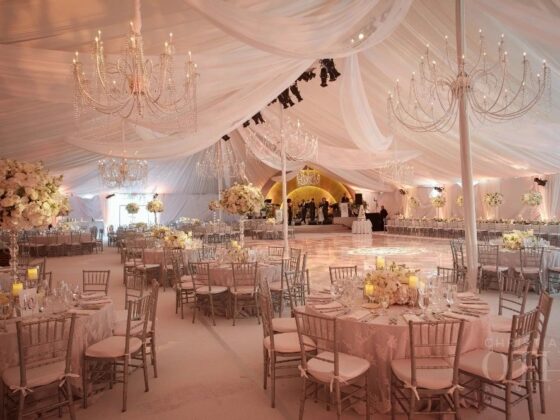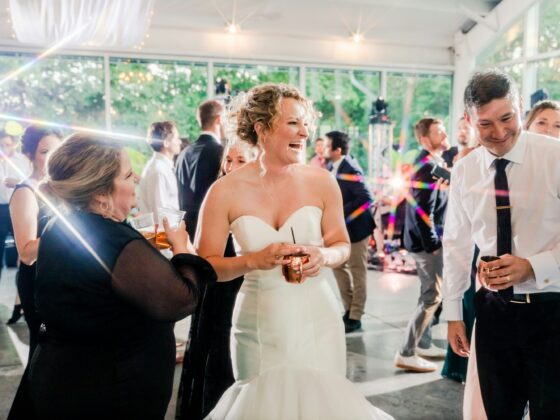Admit it – you read “Wedding March” and a very specific song popped into your head immediately. The question is – which one? There are two entirely different and equally iconic songs often colloquially referred to as “The Wedding March” and it’s more common than you’d think to get them mixed up! As masters of the wedding ceremony music, we here at Around Town have gotten pretty good at reading your minds and knowing which one you mean, but we thought it’d be fun to talk a little about the two – what sets them apart, how each one entered the zeitgeist, and when the best moment to use each of them is, if you want to use either of them! One thing is for sure, no matter what songs you choose for your wedding ceremony, our award winning and top-notch musicians will absolutely knock it out of the park on your big day.
The first thing we want to clear up is which song is which! We’ll start with a linked list of the two so you know from the outset which one we’re talking about when.
“Wedding March” by Felix Mendelssohn
“Here Comes the Bride” or “Bridal Chorus” by Richard Wagner
Believe it or not, the “Wedding March” wasn’t actually written for weddings at all. That’s right, Mendelssohn didn’t originally compose it with blushing brides and grooms in mind. Instead, he wrote it as part of a suite for—wait for it—Shakespeare’s A Midsummer Night’s Dream! You know, the whimsical play with fairies, mischief, and a little bit of magic. More specifically, the song is meant to accompany the wedding of Titania, the fairy queen, and Duke Theseus. (It’s also a safe bet that Mendelssohn had no idea his music would one day become a wedding staple, but hey, that’s showbiz for you.)
The best part? This masterpiece was written in 1842, which means the “Wedding March” has been setting the tone for joyous occasions for over 180 years. However, it didn’t actually make its debut in a wedding ceremony until 1847, in England. After that, it slowly but surely started gaining steam in the world of weddings, and the rest, as they say, is history.
Now, if you’re wondering where “Here Comes the Bride” comes from, well, we have another fun little artsy backstory for you! It was composed by Richard Wagner for his opera Lohengrin in 1858, and it became a wedding classic after being used for the marriage of Victoria, Princess Royal, to Prince Frederick William of Prussia.
According to Matthew Campbell, founder of My Wedding Songs (another go-to source for all things wedding music), the “Wedding March” is traditionally used for the processional—aka the moment you walk down the aisle to meet your soon-to-be spouse. But it’s also commonly played during the recessional—the big exit after the “I dos,” when you and your spouse make your first grand appearance as a married couple.
Campbell explains that “Here Comes the Bride” is typically used as the processional (cue all the anticipation and emotion), while Mendelssohn’s “Wedding March” is reserved for the recessional (cue all the celebration and confetti). He describes Wagner’s piece as one that evokes “anticipation and grandeur,” while Mendelssohn’s is all about “joy and celebration.” So, while both pieces are iconic, they serve different vibes and moments during your big day.
In other words, this song can bookend your ceremony with an extra layer of tradition and drama. Think of it as a soundtrack that says, “This is really happening!” into “This happened!”
Now, we can hear you asking: is the “Wedding March” still popular? Short answer? Absolutely. Couples still choose traditional tunes like the “Wedding March” for their ceremonies all the time. But here’s the deal: it’s not mandatory by any means! These days, your wedding is all about personal style, and plenty of couples opt for more contemporary or meaningful songs that reflect their relationship. Whether that means a string quartet playing Mendelssohn or an acoustic version of your favorite indie love song, the choice is 100% yours, and we promise no matter what songs they are, our musicians will bring exactly the sound and feeling you’re looking for!
Now we do feel we should add a quick caveat for our religious couples, as there are a few things to think about! For one, not all venues are on board with these classics. According to Campbell, some religious settings—especially Catholic churches—might not approve of the “Wedding March” due to its secular origins and its ties to A Midsummer Night’s Dream (hello, fairies and pagan goddesses!). In fact, the Catholic Church advised against using the “Wedding March” in Mass weddings starting in 1971, though in some cases, it can still be used during the processional or recessional. Lohengrin certainly isn’t as pagan, but the opera is a tragedy far more than a romance, with some sorcery and brothers-turned-into-swans; the wedding in which the “Bridal Chorus” occurs falls in the middle of the opera and is followed by less romantic events (spoiler alert: the bride herself dies just before the curtain falls).
Why the restrictions? Well, it turns out Shakespeare’s play isn’t exactly what you’d call a holy text. Themes of magic, manipulation, and mistaken identities make it a bit of an odd fit for more conservative religious ceremonies. And “Bridal Chorus” could feel like a bit of a bad omen, in addition to coming from a secular source. So, if you’re planning a traditional church wedding, it’s worth checking with your venue to see if they allow the “Wedding March” and “Here Comes the Bride” or if they have any preferred alternatives!






